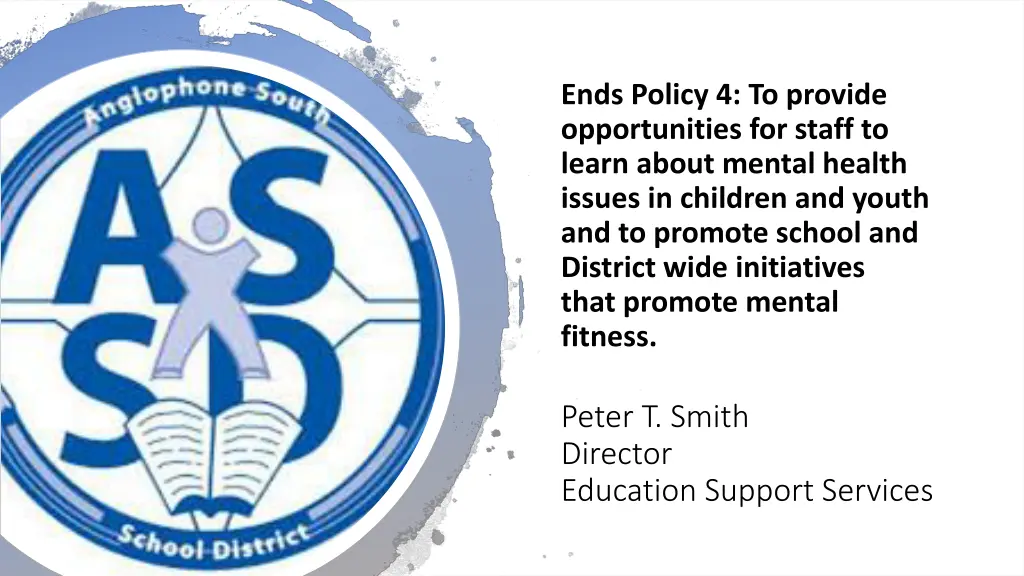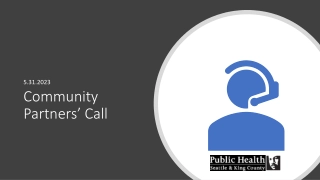
Promoting Mental Health Awareness for Staff in Education Support Services
Enhance mental health awareness among staff in education support services through initiatives focused on learning about mental health issues in children and youth. Strategies include providing professional learning opportunities, training counseling leads, and expanding Mental Health First Aid (MHFA) training. The goal is to promote mental fitness and address mental health needs among students effectively.
Uploaded on | 2 Views
Download Presentation

Please find below an Image/Link to download the presentation.
The content on the website is provided AS IS for your information and personal use only. It may not be sold, licensed, or shared on other websites without obtaining consent from the author. If you encounter any issues during the download, it is possible that the publisher has removed the file from their server.
You are allowed to download the files provided on this website for personal or commercial use, subject to the condition that they are used lawfully. All files are the property of their respective owners.
The content on the website is provided AS IS for your information and personal use only. It may not be sold, licensed, or shared on other websites without obtaining consent from the author.
E N D
Presentation Transcript
Ends Policy 4: To provide opportunities for staff to learn about mental health issues in children and youth and to promote school and District wide initiatives that promote mental fitness. Peter T. Smith Director Education Support Services
New Brunswick Student Wellness Survey Grades 6-12 Indicator High and moderate levels of resilience ASD-S 70% NB 71% High level of school connectedness 92% 92% High level of mental fitness 20% 22% Moderate level of mental fitness 54% 55%
New Brunswick Student Wellness Survey Grades 6-12 Indicator Mental fitness needs highly satisfied by school Youth needing to see or talk to someone for a mental or emotional problem in the last 12 months Youth in need who did not see or talk to someone about their mental or emotional problem ASD-S 53% 33% NB 57% 30% 10% 9%
4.1 Goal: 4.1 Goal: To provide opportunities for staff to learn about To provide opportunities for staff to learn about mental health issues. mental health issues. Strategy: Provide professional learning for guidance staff to meet recommendations of EECD All school counsellors will receive the recommended two days of professional learning in counselling. November 14th: counselling ethics. February 13th: Solution-Focused Brief counselling (SFBT). All counsellors and guidance teachers are trained in Mental Health First Aid (MHFA), Violence Threat Risk Assessment (VTRA), and Applied Suicide Intervention and Skills Training (ASIST).
4.1 Goal: 4.1 Goal: To provide opportunities for staff to learn about To provide opportunities for staff to learn about mental health issues. mental health issues. Strategy: Train counseling leads to provide clinical supervision. Two school counselling leads providing coaching and supervision to school counsellors. All new counsellors and all guidance teachers receive coaching and supervision from these leads.
4.1 Goal: 4.1 Goal: To provide opportunities for staff to learn about To provide opportunities for staff to learn about mental health issues. mental health issues. Strategy: Expand Mental Health First Aid (MHFA) training to school based staff. Our target is 150 seats annually. We conducted one training during the summer. We will have three trainings this winter and spring. There will be an option for staff to take the training in the evening.
4.2 Goal: 4.2 Goal: To support school and district initiatives that promote To support school and district initiatives that promote resilience. resilience. Strategy: Expand district sponsored initiatives both nationally recognized and district developed. This year we reviewed the nationally recognized programs used at K-8 schools. The most commonly used programs at the elementary level are: Zones of Regulation (37 of 42 schools, or 88%) WITS (21 of 42 schools, or 50%) Mind Up (15 of 42 schools, or 36%) Rainbows, Roots of Empathy, & SuperFlex (each at 11 schools, or 26%)
4.2 Goal: 4.2 Goal: To support school and district initiatives that promote To support school and district initiatives that promote resilience. resilience. Strategy: Expand district sponsored initiatives both nationally recognized and district developed. The High School Mental Health Forum took place on December 12th. All high school participated and students at each school are involved in school initiatives to support mental health. The program to ensure graduating students are aware of community resources was piloted with three high schools last spring and will be expanded to six this spring. (FMHS, KVHS, RHS, SJHS, STM, & SSHS)
4.2 Goal: 4.2 Goal: To support school and district initiatives that promote To support school and district initiatives that promote resilience. resilience. Strategy: Promote positive education strategies/Celebrate. To date, 21 schools have had workshops on positive education, as well as all resource teachers, K-8 principals, and staff at the Compass Education Support Program. Schools are using incorporating elements of positive education into their practices. Next steps are to review clear positive education goals in School Improvement Plans.






















